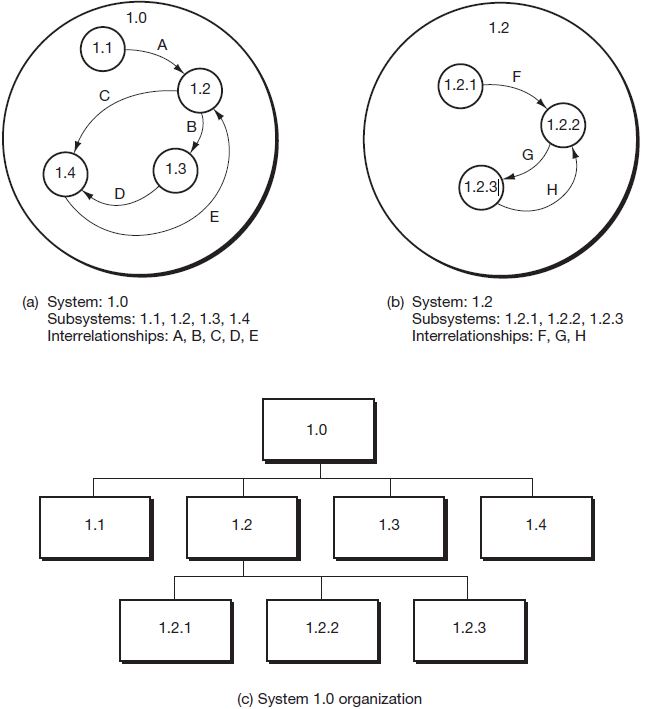A system is a set of interdependent elements that together accomplish specific objectives. A system must have organization, interrelationships, integration, and central objectives. Figure 1.2 depicts a system consisting of four interrelated parts that have come together, or integrated, as a single system, named “system 1.0.” Each part of a system—in this case, parts 1.1, 1.2, 1.3, and 1.4—is known as a subsystem. Within limits, any subsystem can be further divided into its component parts or subsystems.
|
Review Question Are the terms system and subsystem synonymous? Explain your answer. |

Figure 1.2 depicts subsystem 1.2 as a system consisting of three subsystems. Notice that we use the term system (versus subsystem) to describe the area of immediate focus. For example, in a typical university, the College of Business and the College of Engineering are subsystems of the university system, and the Operations Management and Marketing Departments are subsystems of the College of Business system.
In Figure 1.2, parts a and b depict the interrelationships (A through H) in a system; part c depicts the hierarchical organization structure inherent in any system. Again, picture system 1.0 as a university and system 1.2 as the College of Business. Interrelationship F might be a finance student being sent by the Finance Department (1.2.1) to the Department of Accountancy (1.2.2) for a minor in accounting.
A system’s basic objectives depend on its type—natural, biological, or human-made—and on the particular system. For example, the human circulatory system is a biological system (a subsystem of the human body) whose purpose is to carry blood containing oxygen and carbon dioxide to and from the organs and extremities of the body.
Determination of the purpose of man-made systems—such as governments, schools, and business organizations—is necessary to understanding how best to create and evaluate the processes that comprise each system. Business organizations usually have relatively straightforward purposes that are normally related to the “bottom line.” Many businesses, however, establish goals other than financial return to the owners. For example, a business might strive to improve the quality of life of its employees, or to use its natural resources responsibly. Here is our own bottom line: We must know a business organization’s objectives to understand that business as a system and to understand the actions and interactions of that business’s components or subsystems. This is a central theme of the study of IS.
|
Review Question A system must have organization, interrelationships, integration, and central objectives. Why must each of these four components be present in a system? |
- 43864 reads






